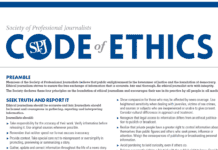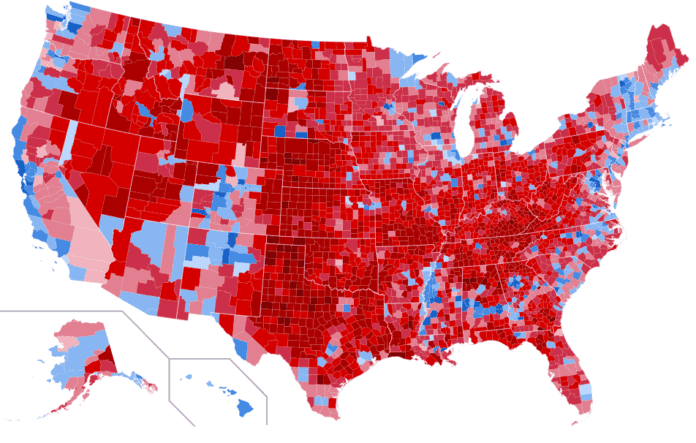Most governing bodies in the state of Arizona began their work for the 2025-26 legislative cycle within the last two weeks after swearing in newly-elected officials in December and early January, although municipal governments did so after their respective counties canvassed the Nov. 5 election results.
The new federal administration will begin in earnest on Monday, Jan. 20, following the inauguration of Donald Trump for his second presidential term, after which administrations from the White House to city halls will be fully in place nationwide for the next two to four years, depending on the legislative body and electoral cycle.
In the aftermath of the 2016 election, we were inundated with letters from conservatives touting the promises that the new Trump administration would bring to the country and letters lamenting Hilary Clinton’s loss in a close election in which Trump won the Electoral College but Clinton won the popular vote, which had previously only happened in 1824, 1876, 1888 and 2000. Liberals also alleged election interference, mainly on social media by foreign actors such as Russia, and demanded the replacement of the Electoral College with a national popular vote.
In the aftermath of Joe Biden’s win in the 2020 election, we received dozens of letters from conservatives about Biden’s stances, while liberals wondered why Biden’s win was not more decisive given Trump’s low approval ratings. This time it was conservatives who alleged election interference, mainly in states where the margins were razor-thin, like Arizona. After Jan. 6, 2021, we also had letters on the aftermath and implications of the attack on the U.S. Capitol.
In the leadup to the 2024, election, we had scores of letters about Biden, Trump and Vice President Kamala Harris, their respective fitness for office and why they should or shouldn’t be elected. But after the election on Nov. 5, letters from liberals and conservatives contemplating what may or may not happen in a second Trump administration haven’t appeared.
Perhaps it was because the win was so decisive, with a larger percentage of the working class and Democratic-leaning demographic groups shifting toward Republican candidates.
Perhaps it was because Trump won a plurality, though not a majority, of the electorate as well decisively winning the Electoral College, including all of the swing states.
Perhaps it was because voters were largely turned off by the three party nominees who ran for president this cycle. Perhaps it was because after all the nastiness going into the election, potential writers were just tired and resigned themselves to the will of the voters. The silence from both sides has been eerie compared to the weeks before election day.
Pundits and Democrats have done a lot of navel-gazing about their loss, but party leaders seem unlikely to make any substantive changes, chalking their loss up to Trump, the man, rather than systemic issues that caused voters to turn away. Republicans are largely in alignment with 78-year-old Trump, but the party will fracture in a power vacuum once he’s gone.
At the funeral of former President Jimmy Carter, the friendliness shown by the collection of former presidents present to one another, many of whom campaigned against Trump in 2024, seemed to tell voters that the threat they alleged Trump would pose in a second term was insincere political rhetoric and bluster.

Courtesy screenshot
While Republicans are promising big federal changes, in Arizona, we shouldn’t expect too much difference.
Republicans picked up two seats in the House and Senate, increasing their majority to three seats in both bodies.
Arizona Gov. Katie Hobbs, who set a record number of vetoes over the last two years, will likely up that record further, even though Arizona state lawmakers feel newly emboldened by their mild gains. The Republican votes in the legislature are not enough to overcome a veto and the legislature is more ideologically divided than it was over the last two years, with fewer lawmakers willing to cross the aisle. Candidates in “competitive” districts won on partisan talking points.
Although county issues are generally administrative, with differences based on regionality rather than political partisanship, the Yavapai County Board of Supervisors maintains a 4-1 Republican majority, with Nikki Check replacing Donna Michaels in our District 3. The Coconino County Board of Supervisors had five Democrats before the 2024 election; Tammy Ontiveros, representing Uptown and Oak Creek Canyon, is now the sole Republican.
The compositon of the legally nonpartisan Sedona City Council in 2025 is virtually identical to the last two years, save for Derek Pfaff replacing Jessica Williamson, who did not run for reelection.
Pfaff will bring his voice to council, but the other six members are likely to hold to the same policies and practices they held before the Nov. 5 election.
In any case, we welcome your letters on national, state, county and local issues. You can email them to me at editor@larsonnewspapers.com.


















